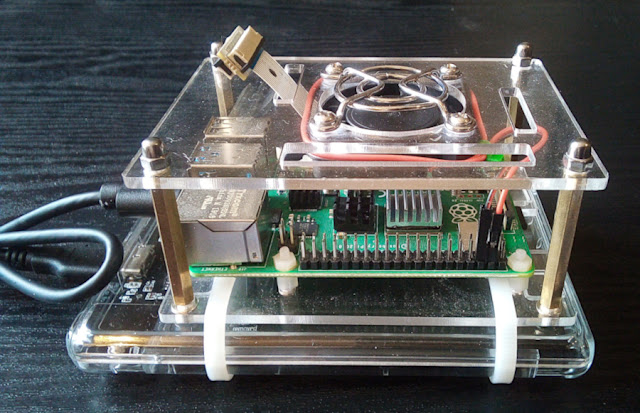A 120 GB SSD was fitted inside a USB 3.0 caddy and was connected to a USB3.0 port of the Raspberry Pi4B. The SSD case was attached to the Raspberry Pi case with cable ties. Small rubberised plastic feet were stuck to the base of the Pi and the SSD caddy to protect any surface the device is placed on.
The Raspberry Pi
The System was set up to boot and run from the SSD and the SSD was used to store the image results as Tiff files.
The Raspberry Pi was connected via HDMI to a 10.1 inch HD monitor and was controlled by a Raspberry Pi Mouse and keyboard.
The imaging setup
A Canon EOS 4000D DSLR camera was placed at the Newtonian focus of a Skywatcher Explorer 130 PDS 130mm, f/5 Newtonian and tethered to the Raspberry Pi.
AstroDMx Capture for the Raspberry Pi was used to capture 25 x 90s exposures at ISO 3200 of the Omega (Swan) nebula with 5 matching dark-frames.
The data were transferred quickly by USB3.0 to a MacBook Air for processing.
Deep Sky Stacker running in Wine was used to stack the best 24 images. The resulting image was post processed in The Gimp 2.10, Neat Image and FastStone; the latter two running in Wine.
The Omega nebula
This was a quick demonstrator of the system under conditions of poor transparency and without a light-pollution filter. Nevertheless, it can be seen that the Raspberry Pi4B is very suitable for astronomical imaging.
Nicola has built the necessary tool chains and cross compiler so that the software can be run on the Pi. The software will be released about the same time as the next version of AstroDMx For Linux, with DSLR support as well as a version for macOS.


